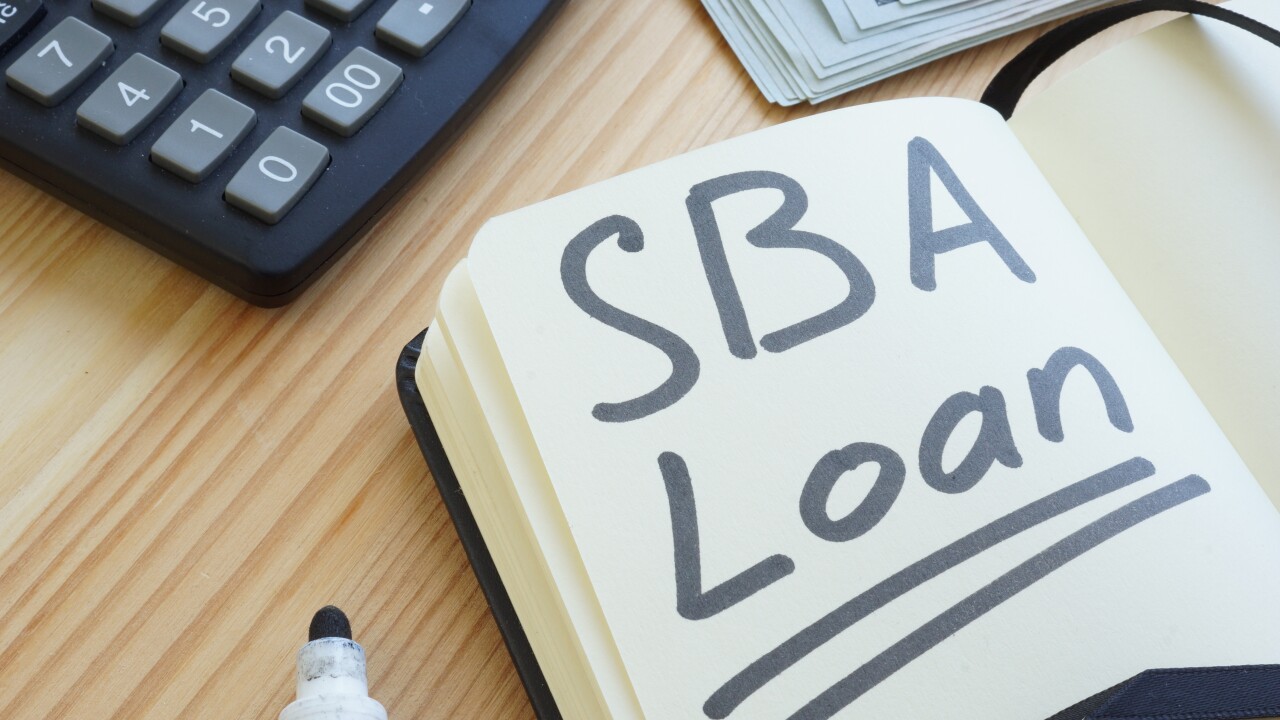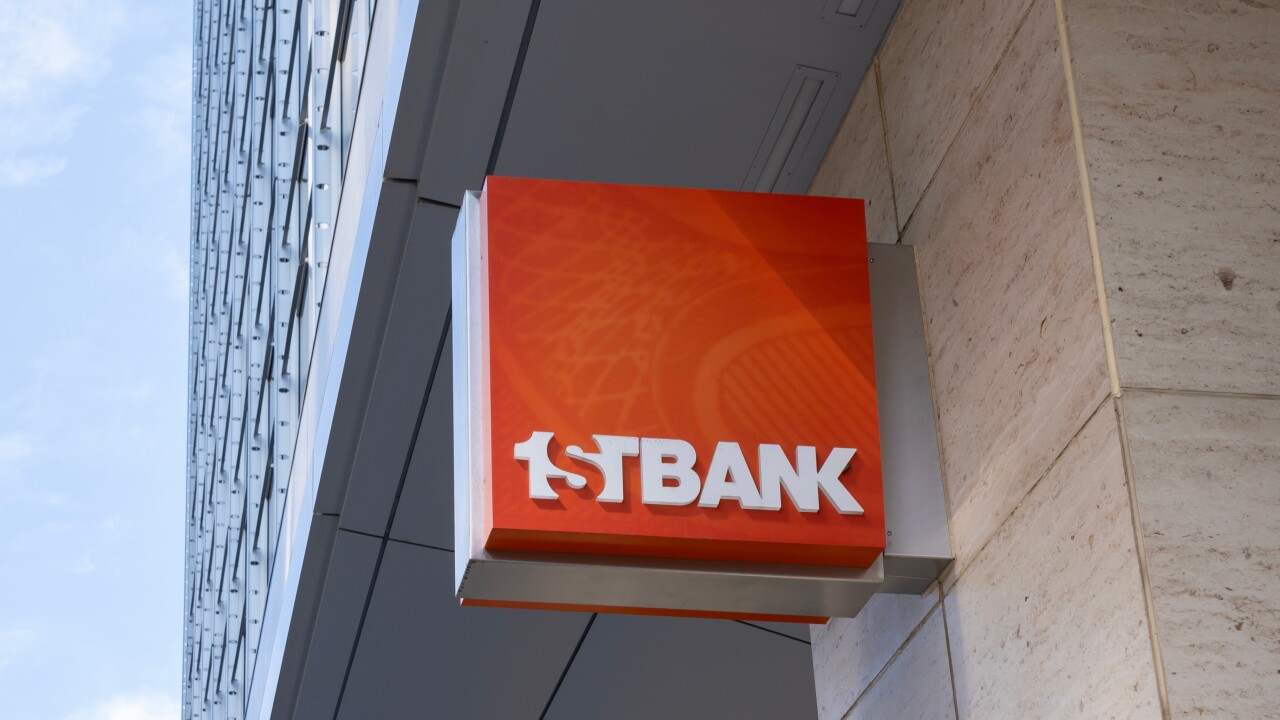IMGCAP(1)]
USAA's launch this week of a service that enables customers to deposit checks into their accounts using images captured with their Apple iPhones could be a game-changer for small banks with a few or no ATMs but with customers who do not live close to a branch or an ATM.
"It certainly fits into our game plan because we don't have any branches or ATMs," says Jeff Dennes, executive director of mobile services for the San Antonio-based financial-services company that primarily serves individuals in the military and their families. "It has helped us overcome a couple of barriers."
The service, dubbed Deposit@Mobile, is more convenient than going to an ATM to deposit a check, Wayne Peacock, USAA executive vice president of enterprise business operations, said in a statement. "Our members are on the go and need to be able to manage their accounts at all times," he said. "They can use their iPhones to deposit a check from ball fields, PTA meetings, neighborhood gatherings or anywhere else they can get a wireless signal."
USAA has 7.2 million members, many of whom are stationed at various military posts throughout the world. Deposit@Mobile also could end the aggravation some non-USAA members endure when reassigned to a new post in another state or country. They normally have to close their bank account and open a new one at or near their new base.
"This way, they are always with us," says Dennes, adding he expects Deposit@Mobile to attract new customers.
In 2006, USAA introduced Deposit@Home, enabling USAA members to deposit checks into their accounts using images created with scanners connected to their home personal computers.
"Prior to Deposit@Home and Deposit@Mobile, USAA received 100% of its deposits either through the regular mail or direct bank deposits," Dennes says. Thirty-five percent of the USAA's customers now use Deposit@Home, he adds.
USAA launched Deposit@Mobile on Monday, and by Tuesday afternoon the financial institution has received more than 2,000 deposits through the service, Dennes says. Bank customers can download the application for free from the Apple store.
With Deposit@Mobile, iPhone users launch USAA's mobile-banking application. The customer then takes photos of the front and back of the check, and the application sends the images to the bank, which verfies the check's validity and deposits the funds into the individual's account.
USAA developed the technology in-house, including software that clears up any distortion so the check image complies with the Check Clearing for the 21st Century Act. It designed the application for iPhones because 350,000 to 400,000 USAA members own the devices, Dennes says.
The financial-services company also is developing a check-deposit application for BlackBerry, Palm Pre and Android smartphones. Smartphones are mobile phones that offer advanced capabilities, often with personal computer-like functionality. They generally are equipped with 3G or WiFi functionality.
USAA tested Deposit@Mobile for two years with 500 employees who owned iPhones before rolling the service out to customers.
Though USAA plans to sell the service to other banks, Dennes would not speculate on whether other institutions will enable their customers to deposit checks from smartphones or whether the service would affect ATM use. However, Bank of America Corp. and JPMorgan Chase & Co., which operate two of the nation's largest ATM networks, say they are they are closely monitoring consumer use of remote check deposits via smartphones.
A year ago, Chase launched remote deposit capture, enabling businesses to deposit checks into their accounts from their offices. "The businesses really like it, and we are looking at allowing consumers to make check deposits with their cell phones," Tom Kelly, a Chase spokesperson, tells ATM&Debit News. Chase owns 14,272 ATMs.
BofA, which operates the nation's largest bank-owned ATM network with 18,500 machines, also is studying enabling customers to deposit checks using smartphones, a spokesperson says. The bank recently announced it will close an undisclosed number of branches, in part, because of the anticipated growth of mobile banking.
ComScore Inc., a Reston, Va.-based market-research firm, contends USAA's iPhone application represents progress for mobile banking. "This definitely represents a significant step forward in the mobile-banking customer experience that will likely increase the pace of innovation as other banks look to play catch-up," says Marc Trudeau, comScore senior director of marketing.
BofA and Chase also operate the two largest mobile-banking programs, according to comScore, which says BofA controls 35% of the U.S. mobile-banking market and Chase 12%.
The number of active U.S. mobile-banking customers will reach 53.1 million in 2013, up from 4.9 million in 2008, predicts TowerGroup, a Needham, Mass.-based consulting firm owned by MasterCard Advisers. ATM manufacturers NCR Corp. and Diebold Inc. also are reacting to this trend. Both companies offer banks mobile-banking products. NCR signed an agreement in April with Mitek Systems Inc. of San Diego, whose mobile-deposit application is similar to USAA's in that it enables banks to accept check images created with smartphones (ADN, 8/6).
Increasing sales of smartphones are driving growth in mobile banking, says James DeBello, Mitek CEO.
In its research, comScore found that 17% of mobile financial users have a smartphone compared with 83% who do not. However, smartphone sales will grow at more than a 30% compound annual growth rate for the next five years globally, taking an increasing share of the overall wireless market, reports In-Stat, a market-research firm based in Scottsdale, Ariz.
Though enabling consumers to use smartphones to deposit checks makes depositing easier, consumers still need access to cash, so ATMs are not likely to go away any time soon.
But not everyone believes consumers will need cash as often. Indeed, consumers already are making fewer trips to ATMs because they are paying for purchases with their debit and credit cards, notes Aaron McPherson, research manager for payments at IDC Financial Insights.
Still, smartphones' impact on ATM use will be minimal or nonexistent in the forseeable future. "Smartphone penetration is still too low," says comScore's Trudeau. "The impact may be more significant at a few firms like USAA that are pushing the remote check-capture technology envelope."ATM





